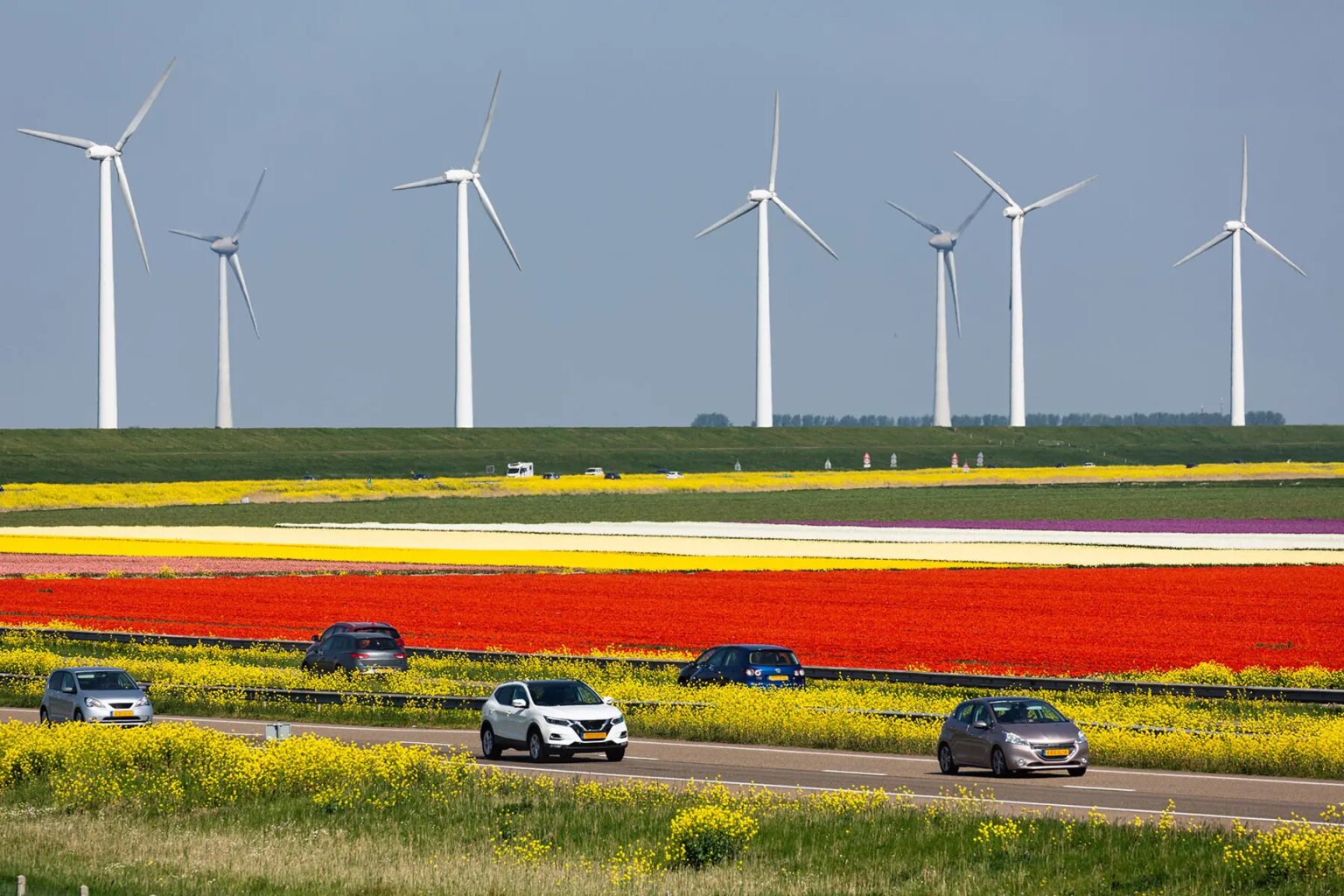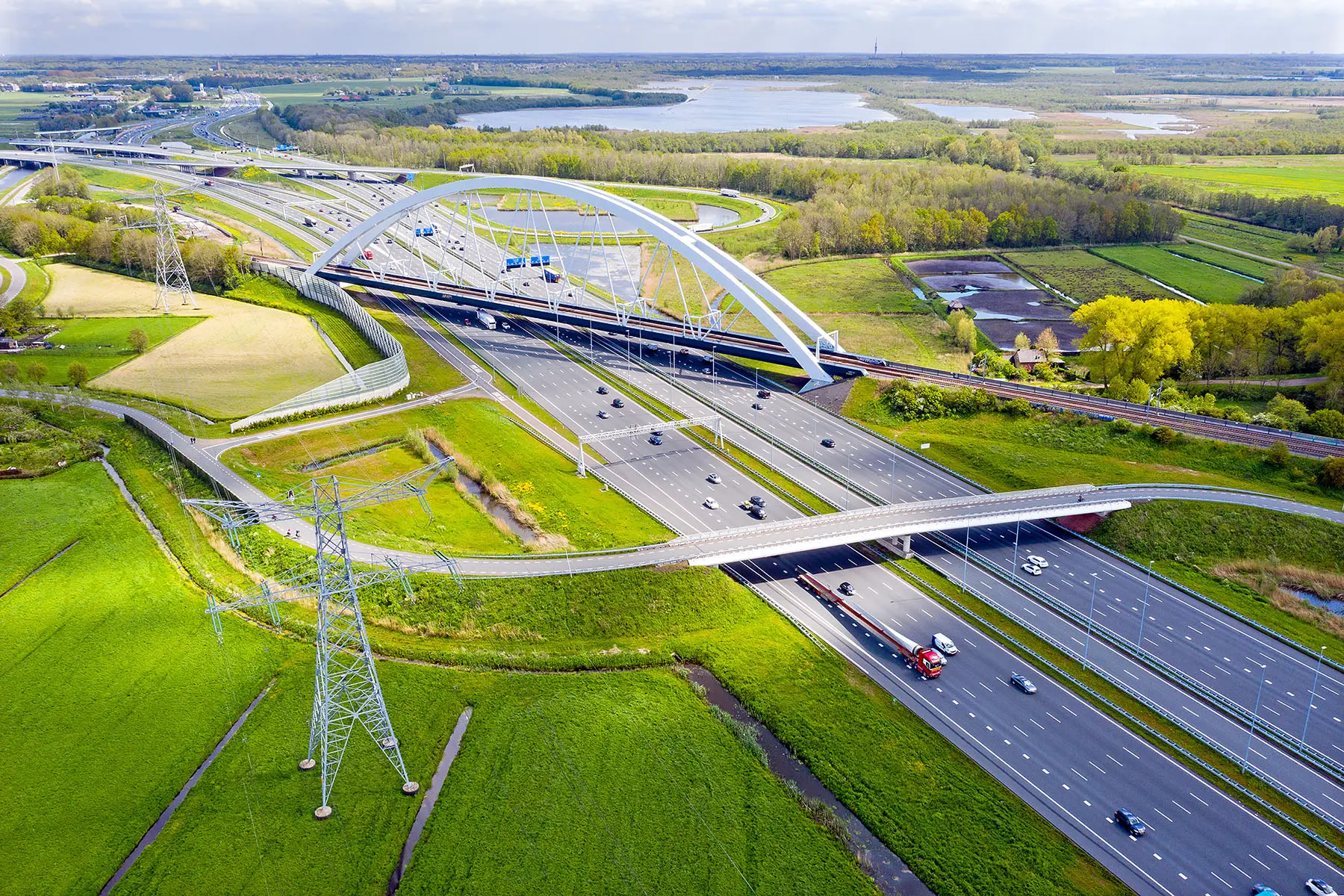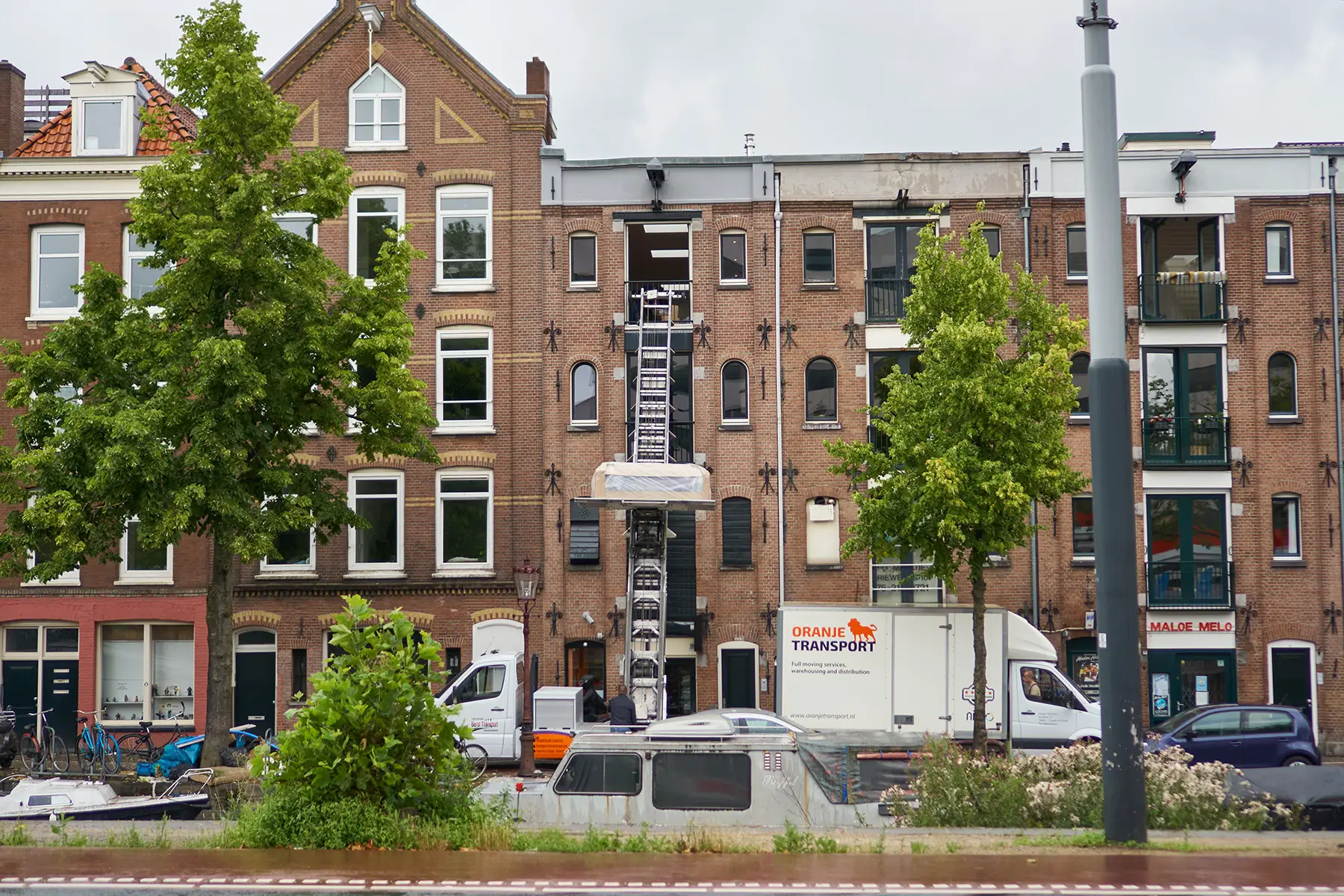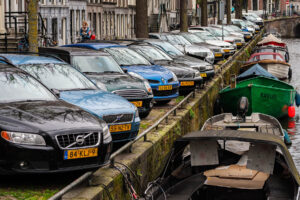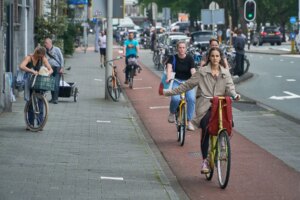Most cities within the Netherlands are small enough to explore by foot, bike, or public transport. If you want to venture outside your city, however, it is practical to have a car at your disposal.
Discover how you can get a Dutch driving license in the following sections:
- Driving licenses in the Netherlands
- How to get your Dutch driver’s license
- Driving lessons in the Netherlands
- Driving tests in the Netherlands
- Before getting on the road
- Can you drive with a foreign driver’s license?
- How to exchange a foreign license for a Dutch one?
- Renewing your Dutch driver’s license
- What to do if your driving license is lost or stolen?
- Driver’s licenses for other vehicles
- Can you lose your driving license?
- Useful resources
FBTO
Getting behind the wheel in the Netherlands? You'll need a car insurance premium that suits your lifestyle. With FBTO, you can supplement your basic cover with add-ons that meet your driving needs, including roadside assistance and occupants insurance. Enjoy 24/7 emergency support and peace of mind by taking out a policy with FBTO.
Driving licenses in the Netherlands
A Dutch driver’s license (rijbewijs) is an official document that allows you to drive in the Netherlands and all member states of the European Union (EU) and the European Economic Area (EEA). It also serves as valid proof of identification in most places in the Netherlands.

The permit is a pink plastic card and is the size of a regular bank card. It states your personal details, the type of vehicle you’re permitted to drive, and the license issue and expiry date. They are valid for up to 10 years, depending on your age, license category, and medical record.
On the front of the card, you’ll find the following:
| Number on the license | Information it contains |
| 1 and 2 | Your full name |
| 3 | Your date of birth and place of birth |
| 4a and 4b | The issue and expiry date of the license |
| 4c | The municipality in which the license was issued |
| 5 | Your license number |
| 7 | Your signature |
| 9 | Your license category (e.g., B for cars) |
The back of the license contains a table with information on the different driving categories. The Netherlands has five categories, including:
- A – mopeds and motorcycles
- B – personal cars
- C – small trucks
- D – motor vehicles that can transport up to 8 people (i.e., a bus)
- T – tractors
Dutch driver’s licenses fall under the responsibility of the Ministry of Infrastructure and Water Management (Ministerie van Infrastructuur en Waterstaat – IenW). They are issued by the Netherlands Vehicle Authority (Rijksdienst voor het Wegverkeer – RDW).
Expats with a foreign license are allowed to drive in the Netherlands. However, they will need to exchange their permit for a Dutch one, depending on the duration of their residency.
How to get your Dutch driver’s license
You must be 18 to get an independent driver’s license in the Netherlands. Of course, you must also clear the theory and practical driving tests.
With that out of the way, you will need to go to your local city office with the following documents:
- Valid Dutch residence permit
- Certificate of driving proficiency, which you get on passing the theory and practical tests
- Statement of health
A driving license costs €51.11 (2024) and takes about five days. You can also submit an urgent application with shorter processing times for a total fee of €90.75. The city office will then give you a receipt with a date for collecting your license. If you fail to collect your permit within three months of this date, you will need to re-apply.
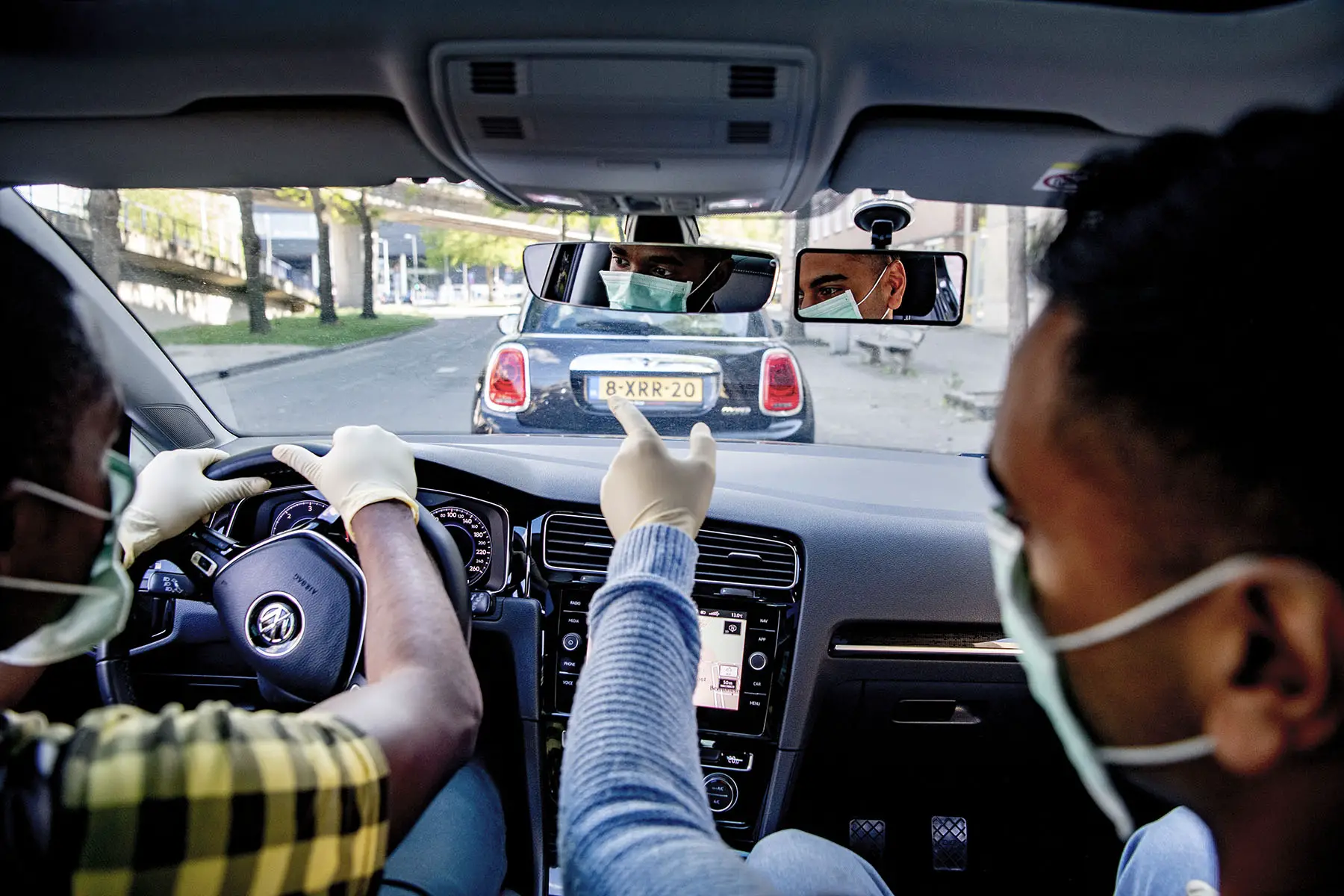
It is also possible to apply for your Dutch driver’s license at an earlier age. You can take a theory test and start driving lessons at 16 and complete your practical test when you are 17. That said, 17-year-olds can only drive when accompanied by a guardian or supervisor (begeleider). For this, you will need to have an accompanied driving permit (begeleiderspas), which states the names of your supervisors approved by the RDW. You can select up to five supervisors.
Beginner’s driving license
New drivers will first get a beginner’s driver’s license, regardless of their age. This means that you’ll face harsher punishments for traffic violations (e.g., tailgating or causing an accident). The police will assess the situation and may give you a demerit point on your license. Your permit will be revoked after two points.
You’ll have a beginner’s permit for:
- Seven years if you got it when you were 16
- Five years if you were 17 or older
Driving lessons in the Netherlands
Only diploma-qualified driving instructors are legally permitted to give driving lessons in the Netherlands.
Although driving lessons are not compulsory, it is almost impossible to clear the practical test without taking a couple of lessons. As a result, most driving instructors recommend at least 20-35 lessons for people with limited to no experience driving. On average (2024), students need 42 hours before they can take the practical exam.
Hourly rates for lessons range from €45 to €65 an hour. Most Dutch driving schools offer packages at a fixed price that include a set number of lessons and cover driving test costs. Some offer crash courses with intensive lessons so that you can get your permit within 2-3 weeks. Driving schools also offer free trial lessons, and it’s good to ask about this when selecting a school.
In 2023, students paid an average of €3,060 for their driver’s license in the Netherlands (excluding administration fees).
Dutch Driving schools
It’s easy to find a driving school no matter where you live in the Netherlands. In the randstad, most schools will be able to accommodate English lessons. Still, it’s good to check the availability beforehand. CBR also recommends checking the passing rates of your chosen driving school. You can do this on the dedicated CBR search platform.
Top Dutch driving schools for expats include:
Driving tests in the Netherlands
Driving theory and practical exams in the Netherlands are administered by the Central Office of Driving Certification (Centraal Bureau Rijvaardigheid – CBR).
The minimum age for the theory test is 16, and you have 18 months (1.5 years) afterward to clear your practical exam. You’ll also need a statement of health to take the exam and apply for a license. You can purchase this directly through CBR for €44.50.
Dutch driving tests are challenging compared to most other countries. Only around 51% of men and 48% of women pass the practical one on the first attempt. This discrepancy seems to be caused by the gender discrimination of examiners.
Driving theory test
You can take the driving theory exam at any of the 20 CBR test centers across the Netherlands. Using your DigiD (digital identity), you can book a test date, time, and place on the CBR website. In addition, you can select whether you want to take the test in Dutch or English. It’s also possible to take the test in other languages, but you will need to book and pay for a translator.
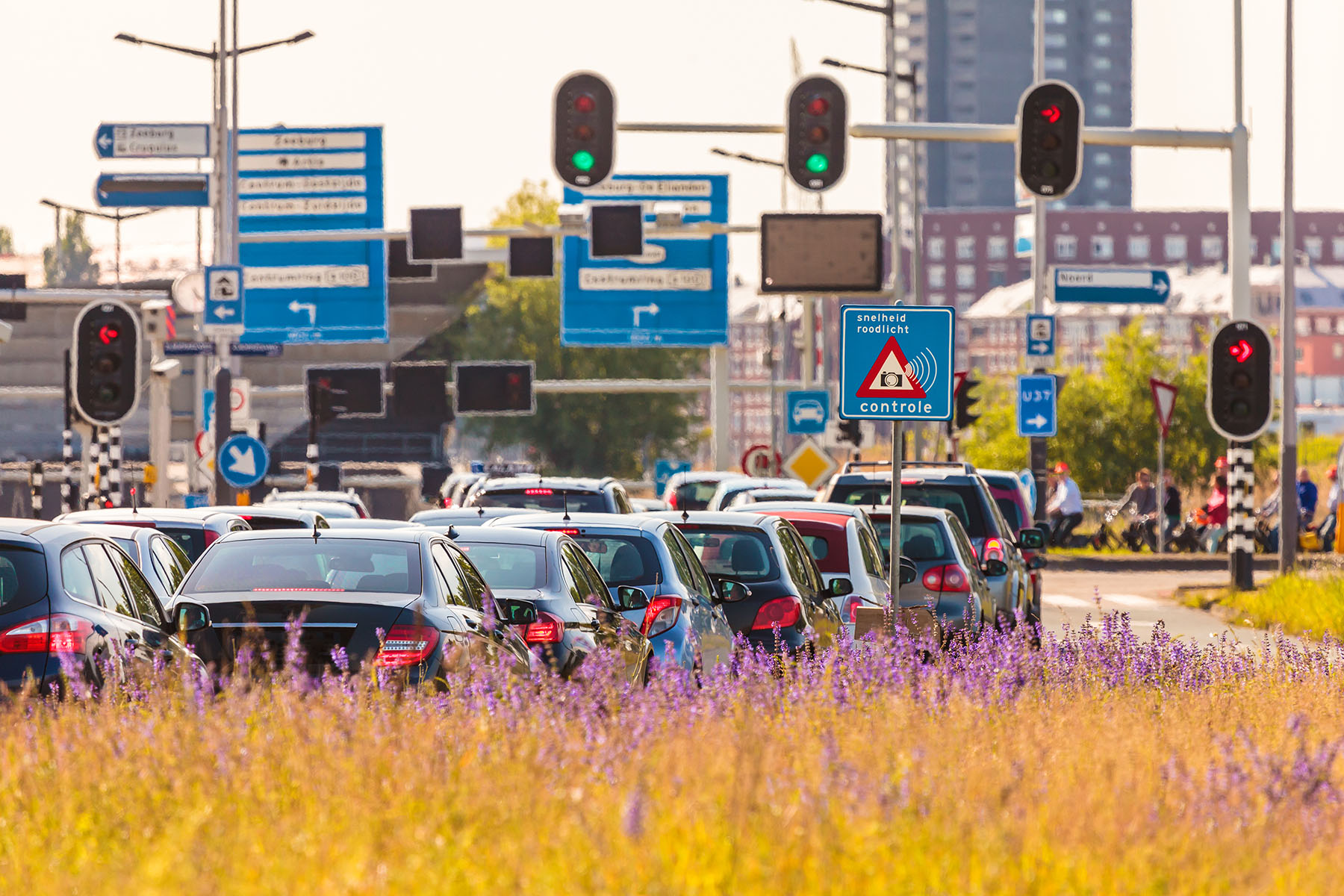
Tests are conducted digitally using computers at the test center. The multiple-choice exam takes about 30 minutes and comprises three sections as follows:
- 25 questions on hazard perception (13 correct answers to pass)
- 12 questions on knowledge of traffic rules and road signs (12 correct answers to pass)
- 28 insight questions that test how you act and apply the traffic rules in different situations (25 correct answers to pass)
Results are shown instantly on the screen after the test and sent to your email. After passing, you have 18 months to complete the practical test to apply for your driver’s license. CBR also provides options such as extra time or guided tests for people with certain disorders or disabilities.
A regular Dutch theory test costs €48, and an English test costs €54, while a theory exam with an interpreter is €111.50.
Practical driving test
You can take the practical test after clearing the theory test and getting a statement of health. Most of the time, your driving school will book a practical test for you. You’ll have to specifically give your school authorization (in Dutch) to schedule a test and pay the €136.50 fee on your behalf. You can also request the exam yourself on the CBR website.
The practical test takes about 55 minutes and begins with the examiner checking your ID, test invitation, and theory test result. After this, you’ll be required to do the following:
- Fill out a self-reflection form
- Perform a basic eye test by reading a car license plate at about 25 meters
- Answer questions about different car parts
- Drive the car following the instructions of the examiner
- Drive the car independently to a destination using a navigation system
You can do your test in your own car or in that provided by your driving school. In some cases, one other person, such as your driving instructor or translator, will be allowed to accompany you during the exam. Afterward, the examiner will tell you whether you’ve passed and discuss your self-reflection form.
If you fail the exam on your first attempt, you can apply for a re-test after four weeks. You can re-apply after 10 weeks if you fail two or three times. If you fail the test four times within five years, you’ll be required to do a special exam.
Before getting on the road
You must take out third-party liability car insurance (autoverzekering) before you can drive in the Netherlands. Additional insurance that covers you for theft, vandalism, or collisions with animals is optional.
You can find affordable insurance quotes in the Expatica Directory or on a comparison site, such as UnitedConsumers. Top Dutch insurance companies that cater to expats include:
Can you drive with a foreign driver’s license?
If your A or B license (i.e., cars and motorcycles) was issued by an EU or EFTA country, you can continue using it for 15 years from the start date, provided it is still valid.

For other vehicles, the maximum duration is five years. Once this period ends, you’ll have to exchange your foreign license for a Dutch one.
Those with a driving permit from a country outside the EU/EFTA region must exchange it for a Dutch one within 185 days of relocating to the Netherlands. If you were already a resident of the Netherlands when your foreign permit was issued, then you cannot use it and must exchange it for a Dutch driving permit.
If you’re on a short visit to the Netherlands, you can use your own foreign license, provided it has the A, B, C, D, and E categories used on European permits. If it doesn’t, it’s recommended to get an International Driving Permit (IDP – internationaal rijbewijs – IRB).
How to exchange a foreign license for a Dutch one?
Expats will eventually need to exchange their foreign driving permits for a Dutch license. You can do so at your local Dutch municipal office using the following documents:
- Valid passport or ID
- Valid Dutch residence permit
- One passport photo
- Foreign driver’s license (translated if issued in a foreign language)
- Evidence of the 30% ruling, if you’re in the Netherlands for work
- Statement of health from the CBR, if your license was issued in a non-EU/EFTA country or if you’re 75 years or older
In the case of non-EU/EFTA driving permits, you will also need to show you were a resident of that country for at least 185 days in the year your permit was issued. You can do this by submitting a copy of your passport, an employer’s statement or pay slips, or your tax returns, for example.
The municipality will forward your application to the RDW, which will verify your documents and send you a response within 10 working days. Once issued, the license can be collected from your local municipal office.
The whole process can take 2–4 weeks and costs about €60.90 (2024). This includes a service fee and additional postage costs for the RDW to send your permit to the municipal office.
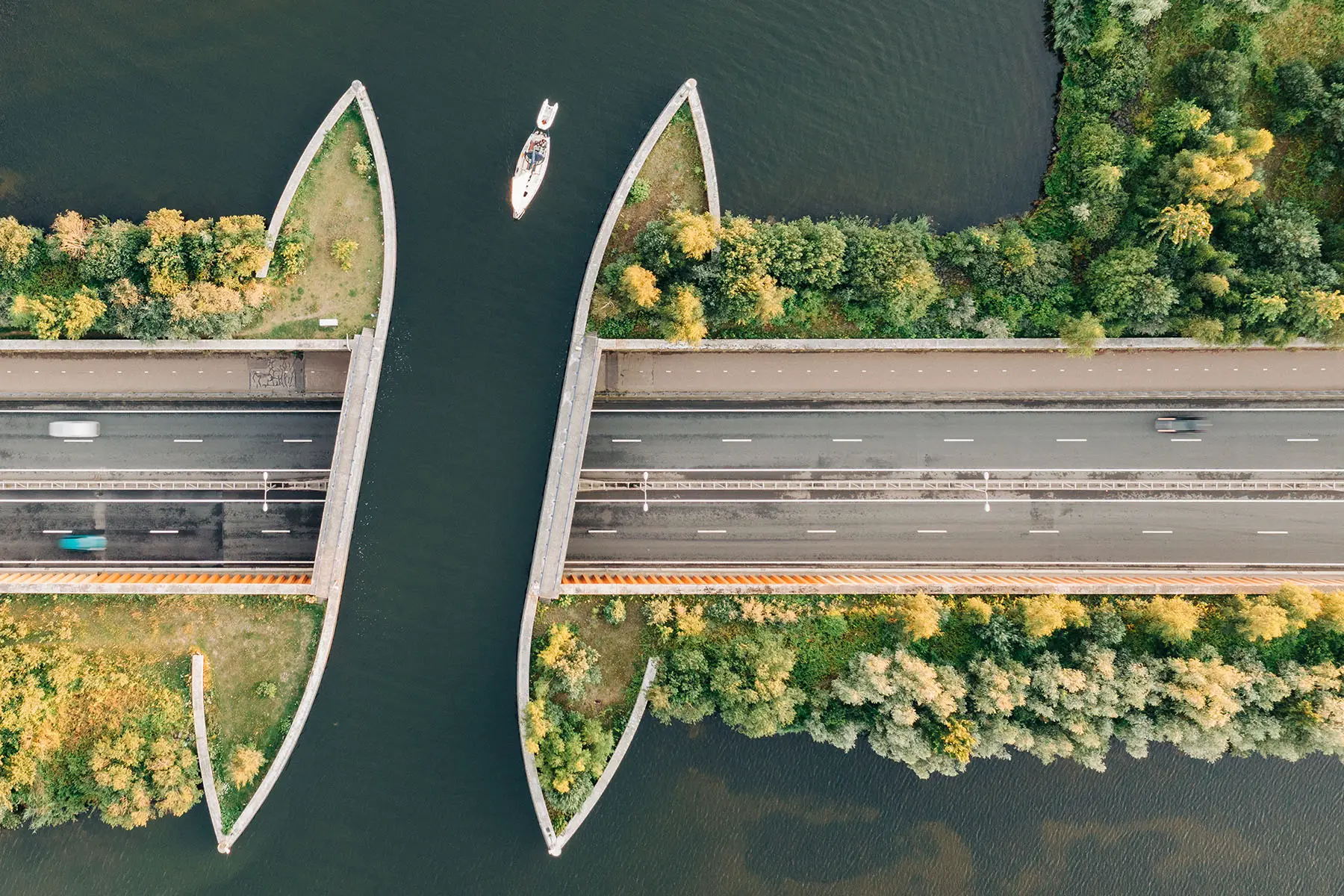
You will not get your foreign license back. Instead, the RDW will send it back to the country where it was issued, as required by law.
Renewing your Dutch driver’s license
If your license is about to expire or you want to add another vehicle category, you’ll need to renew your permit. The validity of driving licenses in the Netherlands depends on the vehicle category, your age, and your DIU history. For example:
| Age group | Category | Valid for |
| Aged 18-65 | A and B | 10 years |
| Aged 18-65 | C and D | Five years |
| Aged 65-75 | A, B, C, and D | Until your 75th birthday |
| Aged 75+ | A, B, C, and D | Five years |
| One year of sobriety | A, B, C, and D | One year |
| Two years of sobriety | A, B, C, and D | Three years |
| Five years of sobriety | A, B, C, and D | Five years |
In many municipalities, you can renew your license online. To see if your municipality offers this service online, check the RDW participating municipalities finder. If it doesn’t, you’ll need to go to your local municipal office in person.
Online process
The online process for renewal is pretty straightforward. You’ll first need to have a passport photo taken by an RDW-recognized photographer. They will send your photo and signature to the RDW, and within minutes, you’ll receive an email from the RDW stating whether you can proceed further.
The next step is to apply for license renewal by logging in with your DigiD and paying the service fee. Within two days, the RDW will let you know when to collect your new license from the local municipal office. You’ll have to hand in your old permit when picking up the new one. Additionally, you may need to submit a CBR-issued statement of health when you’re 75 years or older.
In-person process
The process of renewing your license in person is even more routine. First, you have to make an appointment at your local municipal office. Be sure to bring the required documents. There, you can pay the fee, and you can collect your new driver’s license within five work days.
What to do if your driving license is lost or stolen?
If your Dutch driver’s permit is lost or stolen, you must first report it to the RDW. You can do this by logging in with your DigiD. Alternatively, you can go to your local municipal office, which will file a report for you. The RDW will then block your existing license.

After that, you can follow the normal procedure to re-apply for a new license. Remember that you are not permitted to drive in the Netherlands or elsewhere until you have a new valid permit.
If your foreign driver’s license is stolen, you’ll need to file a report with the Dutch police. To apply for a new permit, you can go to your local municipal office with the following documents:
- Police report
- One passport photo
- Valid passport or ID
- Statement of authenticity from the foreign authority that issued your lost/stolen passport
The rest of the procedure and costs are the same as applying for a new license.
Driver’s licenses for other vehicles
You can get a driving permit for the following categories:
| License category | Permitted vehicles | Minimum age | Requirements |
| AM | Mopeds with 2 or 4 wheels | 16 | |
| A1 | – Motorcycles up to 125cc, maximum power of 11 kilowatts (kW) – Three-wheelers with a power of 15 kW | 18 | Theory and practical exam |
| A2 | – Motorcycles up to 125cc, maximum power of 11 kilowatts (kW), and per kilo empty weight of 0.1 kW – Three-wheelers with a power of 15 kW | 20 | Theory exam or 2 years holding an A1 license and a practical exam |
| A | – Motorcycles of any capacity – Three-wheelers with power > 15 kW | 21 | Theory exam or 2 years holding an A2 license and a practical exam |
| C | Automobiles > 3500 kg and a trailer | 21 | – Category B license – Theory and practical exam |
| C1 | Automobiles between 3500-7500 kg and a trailer | 18 | Theory and practical exam |
| D | Buses transporting 8+ people and a trailer | 21 (18 if a professional bus driver) | – Category B license – Theory and practical exam |
| D1 | Buses transporting 8-16 people and a trailer | 21 (18 if a professional bus driver) | – Category B license – Theory and practical exam |
| T | Tractor or limited-speed motor vehicle with a trailer | 16 |
Can you lose your driving license?
To discourage driving under the influence (DUI), the Netherlands uses a demerit point system.

If you are caught with a blood alcohol content (BAC – promille) of 0.5 or more, you will get a fine of up to €21,500 and one point on your license. In most cases, you’ll also have to take a driver’s safety course, though, in some extreme circumstances, you can face imprisonment.
The DIU point is valid for five years. If you’re caught a second time, and your level is higher than 1.3, your license will be revoked, and you’ll have to retake the driving exam. If your BAC is lower than 1.3 during your second offense, you’ll start a new period of five years. You’ll still only have 1 point.
New drivers are only allowed a BAC of 0.2.
Useful resources
- RDW – official website of the Netherlands Vehicle Authority overseeing driving licenses and vehicle regulations
- CBR – official website of the office responsible for driving tests in the Netherlands
- Government of the Netherlands – official website of the Dutch government with information on driver’s licenses
- Theorieexamen.nl – website offering practice questions and tests to prepare for the driving theory test
- ANWB – Dutch organization providing an array of driving services, such as roadside assistance, insurance, and driving lessons
